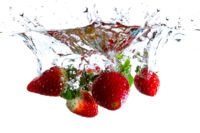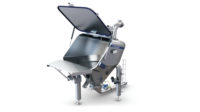After more than four years of research, AINIA Technology Centre, Spain, the European Fruit Juice Association (AIJN), Brussels, Belgium, and several partners from different countries created the PHBOTTLE, what is said to be first bioplastic package obtained from the sugars contained in wastewater.
Specifically, it’s a bottle made with polyhydroxybutyrate (PHB), a polymer produced by bioproduction (microbial fermentation), in which certain bacteria use the sugars in the wastewater to synthesize this type of bioplastic.
During the fermentative processes performed with the juice industry wastewater, it was possible to convert up to 30% of the sugars contained.
The result is PHBOTTLE. The bioplastic material obtained has improved properties, such as antioxidants, which extend the shelf life of the juice. Concretely, microencapsulation technology was used to produce capsules with antioxidants such as limonene, which is an active compound present in orange peel. These capsules were incorporated into the PHB compound used to manufacture the final bottle, thus obtaining an active packaging whereby the antioxidant agent is slowly released, delaying the oxidation of the juice.
Other types of food industry waste were used to improve the strength and other mechanical properties of the material. For instance, cellulose microfibers were produced from rice hulls and used to improve the rigidity of the packaging.
The various biodegradability and compostability tests carried out throughout the project showed that, under the study conditions, 60% of the PHB bottle obtained is degraded over a period of 9 weeks compared to the 100 years on average required for a conventional petroleum-derived plastic container.
This PHB bottle can also be decomposed in composting plants, producing compostandCO2.



